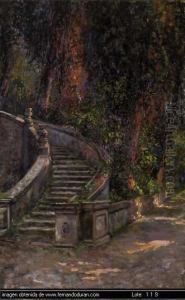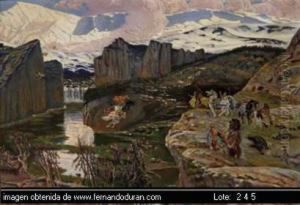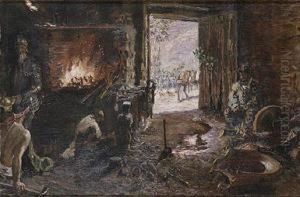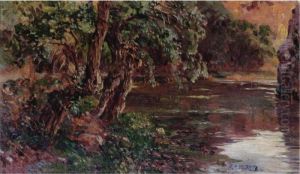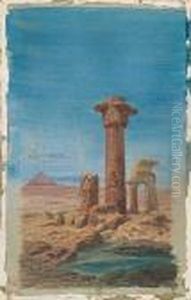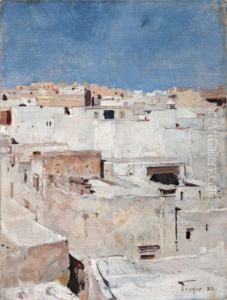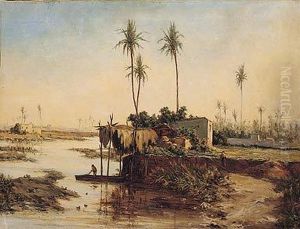Antonio Gomez Munoz Degrain Paintings
Antonio Gómez Muñoz Degrain, more commonly known as Antonio Muñoz Degrain, was a Spanish painter born on December 18, 1840, in Valencia, Spain. He was a prolific artist of the 19th and early 20th centuries, known for his historical scenes, landscapes, and works inspired by literature.
Muñoz Degrain studied at the Real Academia de Bellas Artes de San Carlos in Valencia. His early works were influenced by Romanticism, but as his style evolved, he became more associated with the Symbolist and Modernist movements. He was particularly influenced by the works of the Italian Renaissance, as well as the modern trends of French Impressionism.
Throughout his career, Muñoz Degrain participated in numerous exhibitions and received many awards. He exhibited his work at the National Exhibition of Fine Arts (Exposición Nacional de Bellas Artes) in Spain and also at international events, gaining recognition for his distinct use of color and light.
In 1890, Muñoz Degrain was appointed as a professor at the Real Academia de Bellas Artes de San Fernando in Madrid, where he influenced a new generation of Spanish artists. He also served as the director of the Museo del Prado for a time, contributing to the cultural life of Spain beyond his own artistic production.
Antonio Muñoz Degrain was known for his versatility and his ability to capture the emotional essence of a scene. His landscapes often depicted the Mediterranean coast, and he had a particular talent for portraying the effects of sunlight on water and nature. He also tackled mythological and historical themes, bringing to life the stories and legends of Spain and other cultures.
Muñoz Degrain's work was celebrated for its imaginative qualities and its departure from the more classical and academic styles of his predecessors. His paintings are characterized by loose brushwork, vibrant colors, and an atmospheric quality that gives viewers a sense of the mood and setting.
Antonio Muñoz Degrain passed away on October 1, 1924, in Madrid, leaving behind a legacy as one of Spain's most innovative and influential artists of his time. His works continue to be exhibited in museums and galleries, and his influence can be seen in the works of subsequent Spanish artists.
